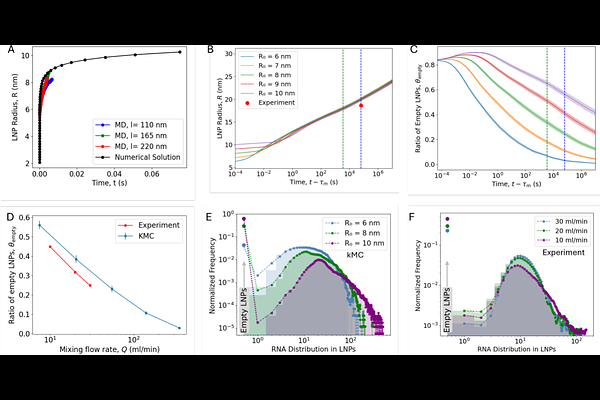Controlling Payload Heterogeneity in Lipid Nanoparticles for RNA-Based Therapeutics

Controlling Payload Heterogeneity in Lipid Nanoparticles for RNA-Based Therapeutics
Pial, T. H.; Li, S.; Lin, J.; Wang, T.-H.; Mao, H.-Q.; Curk, T.
AbstractLipid nanoparticles (LNPs), a leading non-viral nucleic acid delivery platform, are assembled with a heterogeneous payload distribution. This uneven therapeutic payload distribution can be critical parameters influencing delivery efficiency, therapeutic efficacy, and inflammatory side effects, limitations that become especially acute in prolonged gene therapies. Here, we integrate coarse-grained molecular dynamics and kinetic Monte Carlo simulations with single-particle characterization via cylindrical illumination confocal spectroscopy (CICS) and machine learning analysis to understand, step-by-step, the formation of RNA-loaded LNPs and the origins of the payload variability. We find that the balance between RNA diffusion kinetics and lipid self-assembly dynamics is the dominant driver of payload heterogeneity. Leveraging this mechanistic insight, we show that (i) finely controlled turbulent mixing minimizes payload variance and increases the uniformity of RNA distribution without altering LNP size, and (ii) systematic adjustment of salt concentration and PEG-lipid content tunes RNA loading in a volume-dependent manner. Together, these results elucidate the self-assembly landscape of LNPs and provide actionable design principles for crafting more uniform, potent, and safer LNP-based nucleic acid therapies.